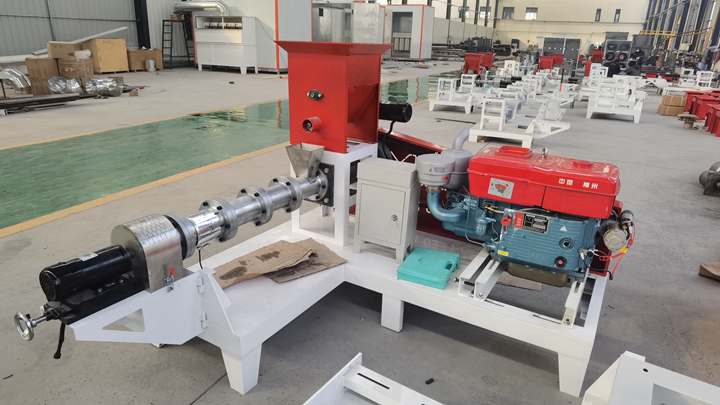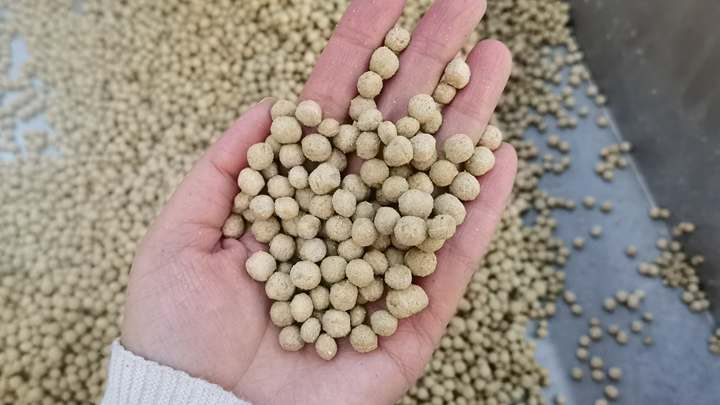
Aug 2, 2022 · The purpose of this review is to assess Ethiopia's fish stocks, capacities, challenges and aquaculture practices. Although Ethiopia has many rivers and Review on potential and challenges of aquaculture practice in Ethiopia | SpringerLink
.jpg)
Dec 24, 2013 · According to the FAO Sub regional Office for Eastern Africa (FAO SFE) report shows (Rothuis et al., 2012), based on GIS assisted modelling, about 15158 km 2 and 871731 km 2 of the total...
.jpg)
The lack of suitable feedstuffs is a major factor limiting the development of aquaculture in Ethiopia. Available datasets of proximate analysis were used to assess the suitability as a fish feed of 7 groups of locally available feed materials.
.jpg)
For the first time in the history of Ethiopian agricultural research, fisheries and aquaculture was recognized as one of the research commodities in the Ethiopian agricultural research system in 1997 with the establishment of the Ethiopian Agricultural Research Organization, (EARO) through the Proc. No. 79/1997. Total area: 20 ha

On November 5th, Alema Koudijs Feed Plc (AKF) opened its new production faility in Debre Zeit, Ethiopia. This new facility is the result of a collaboration between Dutch company De Heus International B.V. and Alema Farms Ltd. (Alema). Get Price. Ethiopia - Aquaculture Production (metric Tons) - 2022 Data 2023.
.jpg)
Aquaculture has been proposed by the government of Ethiopia as an option to boost fish production and as an alternative means to food security and poverty alleviation,
.jpg)
Mar 24, 2021 · Naylor, R. L. et al. Effect of aquaculture on world fish supplies. Nature 405, 1017–1024 (2000). This paper, the original study that motivated this 20-year retrospective Review, provides an
.jpg)
May 13, 2021 · 13 May 2021. The Ethiopian Herald (Addis Ababa) Blessed with the natural and manmade water bodies, such as Lakes, ponds, rivers, and dams which could be hub for fish farming; Ethiopia has the
.jpg)
Feb 8, 2021 · Ethiopia is the water tower of East Africa, but, the fishery potential is under subjugated and aquaculture is also insignificant only 50% of fishery potential used, contribution of Ethiopia’s fishery sector = 0.02% GDP, Fish supply is only 200 g/capita/person/year, compared with 2.6 kg for the East African Region and 20.2 kg for the world.
.jpg)
Apr 21, 2023 · The machines process chickpea, soy, wheat, and barley seed with a maximum capacity of 1.5 tons per hour. With wheels and a compact, efficient design, they are also easy to move from one farmer’s property to another. At a cost of US $7,500 and a production time of 55 days, the machines have potential both for expansion within Ethiopia and
.jpg)
Introduction Ethiopia is endowedwith several productivefreshwater (Lakes and rivers) that is suitable forfishing activities. Aquaculture is contributes tohuman food fish demands, poverty alleviation andrural development and is often mooted as thefastest growing food production sector in theworld (FAO, 2017).
.jpg)
Milling dusts are commonly used as livestock feed in Ethiopia, but very few data are available for the use of this by-product as fish feed ingredient (Ashagrie et al 2008). From a nutrition point of view, milling dusts may be a good alternative energy source for small-scale aquaculture.
.jpg)
Likewise, Ethiopia has enormous potential of freshwater (126.5 BMC) available per year; plus favorable environments considered to be significant scope for fisheries development for fish yield (about 94,509 ton/year + 5.3% as 73,104 ton/year + 3.3% for lentic and 2,1405 ton/year +11.8% for lotic ecosystems).
.jpg)
Aug 27, 2018 · Called Deep Blue 1, the cage was designed by the Hubei Marine Engineering Equipment Research Institute and inspired by the SalMar-designed Ocean Farm 1, and encompasses a volume of 50,000 cubic meters that will generate a harvest of about 1,500 tonnes of salmon per season. Norwegians are also working to improve cage design.
.jpg)
The Afar Agriculture in Ethiopia is the foundation of the country’s Rift Systems the main Ethiopian Rift of central Ethiopia and the economy, accounting for half of gross domestic product, 83.9% broadly rifted zone of south western Ethiopia. The Rift Valley is of exports, and 80% of total employment.